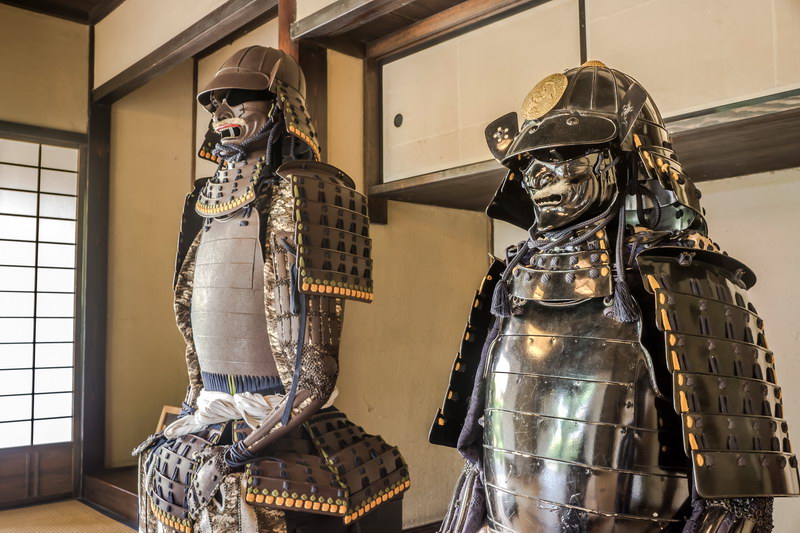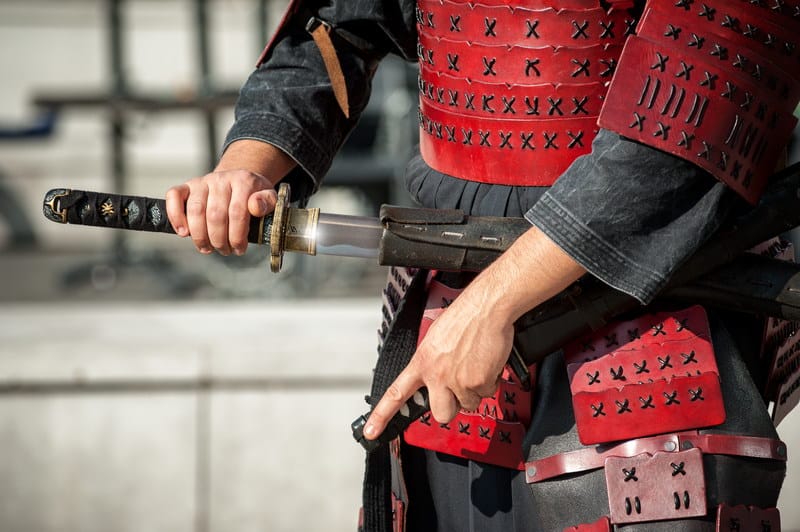Samurai Armor
The Samurai armor has been used during the ancient period in Japan, by the samurai who were considered as a man of honor and strength; they were highly determined and skilled warriors who rarely showed any signs of pain or fear. These courageous and brave individuals charged into battle wielding a variety of weapons such as the Naginata, Katana, and the Nagamaki; they also utilized a special type of samurai armour to protect themselves from various attacks, blows, and injuries that they may have acquired on the battlefield.
The samurai armor is said to have originated from the protective gear utilized by the soldiers of ancient Korea and China, and its history goes all the way back to the fourth century. Since these samurai armors were introduced on the battleground, the Japanese armor had gone through numerous development and changes throughout history.
History of the Japanese Armors
The ancient Japanese samurai armor and helmets were developed during the fourth century and these were mostly made of leather thongs and iron plates. During the Heian period, the creators of such pieces began blanketing parts of the armor with lacquer for weather-proofing since doing so will prevent the armor from acquiring unnecessary damages. At the end of the Heian period, iron and leather scales were utilized to create different types of Japanese armors and the parts were linked via leather, then silk lace.
Trade between the Europeans and the Japanese began during the sixteenth century which is why the samurais of the period were able to acquire European armor which featured the cuirass and comb morion a special kind of open helmet utilized during the middle portion of the sixteenth to the seventeenth centuries. While more variations of armor were introduced, the nature of warfare had greatly changed and developed; this led armor makers to produce newer and better designs of the samurai armors, thus, creating the warriors plate armor. This specific type of samurai armour was made from steel and iron plates and was called the Tosei Gusoku.
The Samuari Armor
Different parts and components make up the samurai armor and all of these are created using a variety of high-quality materials. Steel was usually the element used for producing these but other materials that can be utilized include bamboo, leather, cloth, and wood. Additionally, these samurai armors were also layered with bright lacquer to safeguard the armor from various types of damages that are caused by Japans harsh climate.
The samurai armour featured individual parts and a full traditional samurai suit may include the following pieces:
Dō
Dō is known as a chest armor made of either leather or bamboo plates
Kusazuri
Kusazuri is the down part of the Japanese armor that helps that offer extra protection on the groin and the upper part of the legs. it helps lighten the gear which allowed the samurai warriors to skillfully execute various moves on the battlefield.
Sode
Sode is a large, rectangular-shaped shoulder pad that was made from leather plates or bamboo staves
Kote
Kote is an armored glove-like sleeve that extends all the way to the shoulder, covering the samurais forearms.
Kabuto
Kabuto Helmets were usually made of leather plates, bamboo staves or steel that are all riveted together. A shikoro (neck guard) is made from layers of curved bamboos and leather strips that were suspended from the kabutos bottom edge.
Menpo
This featured face and throat guards called yodare kake that were made from rows of leather or bamboo or metal plates; the menpo usually have different intimidating and cool design which gave the samurai a vicious look.
Haidate
Haidate were leg protectors that were tied along the waist to conceal the thighs; usually made from cloth with little bamboo or leather plates.
Suneate
Shin guards that were made out of bamboo stave splints then linked by a kusari and sewn to a type of cloth before tying this around the calf.
The Auxiliary Armor
For the auxiliary gear of the samurai armor, it is made up of the following parts:
Guruwa
A specific kind of neck and throat protector
Nodowa
The throat and neck protector
Tate Eri
A little padded pillow-like material that features a standing armored collar sitting on the shoulder of the samurai armor to protect the dous weight. The standing collar is lined with the kikko to safeguard the users neck.
Manju no Wa
This piece is a combination of the collar & armpit guards, as well as the shoulder pads which works to protect the users upper chest portion.
Manchira
A kind of armored vest that is covered with the karuta, kusari, or the kikko
Wakibiki
This is a simple piece of rectangular cloth covered with the kikko, karuta, or the kusari; these pieces (or a combination of them) were carefully sewn to the cloth backing. These pieces of armor can either be utilized outside or inside the chest armor dou depending on the kind.
Yoroi Zukin
Hoods made of cloth with a variety of armor sewn to the piece
Kogake
These are armored tabi that covered the foots top-portion
Jingasa
A war hat that resembled the coolie hat of civilians; these were issued to the ashigaru retainers.
Hachi Gane or Hitai Ate
The different kinds of portable and light forehead protective gears
Yoroi Katabira
Jackets that are covered with numerous armor which are either exposed or hidden between cloth layers
Yoroi Hakama
Skirt-like pants that are covered with numerous armor; these can either be exposed or concealed amidst layers of cloth.
The Samurai Yoroi
The yoroi armor is one of the most prominent examples of the classic samurai armor worn by the warrior class of feudal Japan. The term yoroi or o-yoroi literally means great armor and this piece started to appear during the tenth century of the middle and late Heian era. It became a very popular piece and was utilized by almost every warrior during the twelfth centurys Genpei War; the significant characteristic of the samurai armor was that it was specifically designed for cavalry archers. The yoroi that appeared with a boxed shape was quite heavy and did not allow the samurai to have adequate flexibility to move freely unlike the dou maru which was its counterpart. Eventually, around the fifteenth century, the armor eventually fell out of favor when the samurai opted mostly for infantry strategies.
These types of samurai armor are still widely appreciated by people today which is why a lot of sword and armor enthusiasts, as well as those who re-enact historical scenes, are searching for samurai armor for sale. These can either be battle ready pieces which can be used for sparring practice, movies, or plays and there are also decorative pieces that one can add to their growing collection of classic Japanese weapons and armor.



